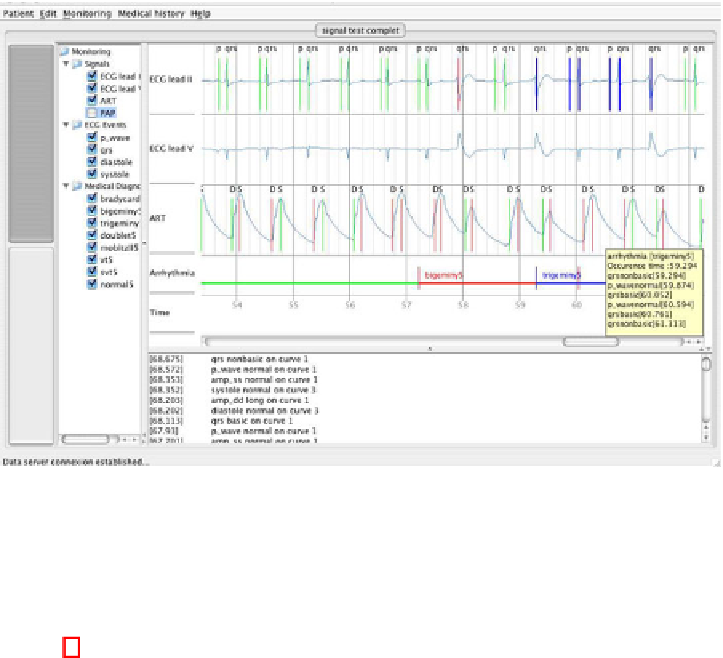Information Technology Reference
In-Depth Information
Fig. 7.
The graphical interface of Calicot showing the recognition of bigeminy and trigeminy
episodes.
each ECG chunck was also kept. These results were used to define the gold standard
(
bestChoice
).
Table 1 synthesizes the results of arrhythmia recognition without the pilot and every
QRS detector algorithms,
bestChoice
(used as gold standard) and the different pilot-
ing rule sets. According to the F-measure,
pilot D2
outperforms all the other meth-
ods. The best non piloted monitoring performance (
FM
=88.35%) is obtained when
using algorithm
kadambe
for temporal abstraction, followed by
af2
(
FM
=86.67%),
and
benitez
(
FM
=85.25%). These three algorithms outperform the others with an F-
measure greater by 1.73%. The best piloted monitoring performance is obtained by the
pilot D2
rule set followed by
pilot D1
and
pilot D3
.
pilot D1
performs
better than non piloted
af2
but worst than non piloted
kadambe
. The upper bound
that can be reached is given by
bestChoice
with
FM
=91.71%. This shows that the
piloting strategy could be notably improved with more accurate rules (at most by 3.36%
on the F-measure).
kadambe
associates wavelet analysis with heuristics for self-adaptating to the sig-
nal, thus, it can be considered as being “piloted”. To asses the pilot more fairly, new
piloting rules,
pilot D1
*
,
pilot D2
*
and
pilot D3
*
, were learned excluding
kadambe
. The best performance of non piloted algorithms was obtained for
af2
fol-
lowed by
benitez
. The piloted rule sets exibited the best performance:
pilot D3
*
with FM = 87.42% outperformed non piloted
af2
with
FM
= 86.67% improving
FM
by 0.75% which is considered a good improvement in the QRS detection field. The
number of switches (column
switches
) shows that the best possible performance
makes 1486 switches.
pilot D2
reached good scores with far less switches (294).

Search WWH ::

Custom Search